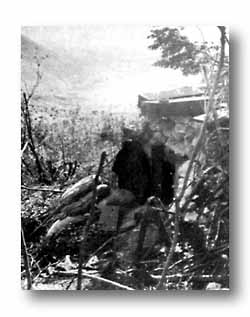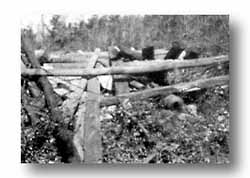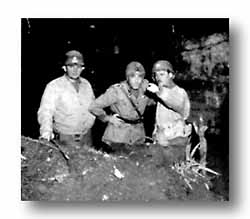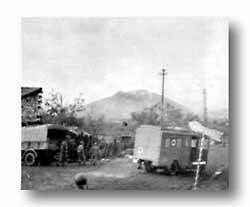
MT. LUNGO
| The capture of the Camino - Maggiore
hill mass and Mount Sammucro had been of vital importance but the battle for the Migano
Gap was not yet completed. In the heart of the Gap stood Mount Lungo, dominating Highway 6
and overlooking San Pietro, desperately held by the Germans against all our attacks.
Lungo's slopes were milder than either Maggiore or Sammucro but they were rocky, barren
and well fortified by the Germans. At its base the enemy had cleared away all the trees
and vegetation for unobstructed fields of fire and the approaches to the mountain were
heavily mined. An Italian brigade tried to take Lungo from the South but met with
disaster. A week later the 142nd Infantry, still tired from the Maggiore mission, was
assigned the task of seizing Mount Lungo. Before
daylight of December 15 the two assault battalions of the 142nd were hidden on the lower
eastern slopes of Mt. Maggiore to await the coming evening. Early that night, Lt. Col.
Graham's 2nd Battalion jumped off, swinging around Lungo to attack it from the north and
rear, while the 1st Battalion, Major Elliott W. Amick commanding, struck directly across
the intervening valley to attack from the west. The enemy was caught completely by
surprise, many of them asleep in their holes.
|
|
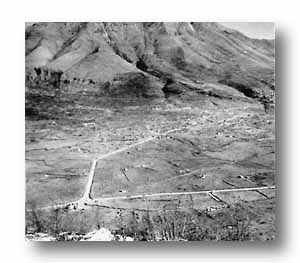 |
|
MT. LUNGO'S strategic advantage can be
well-approximated in this photo looking down from it onto the intersection of the lateral
mountain road from Venafro and San Pietro with Highway 6. Shortly after Lungo's capture,
16 German vehicles and tanks fleeing from San Pietro were intercepted and destroyed by our
military observer in this position. (Below) Barren and rocky, Mt. Lungo lies astride the
valley opening at Mignano Gap. Rock and timber shelters and heavily-mined approaches aided
the Germans in holding this important ground despite large masses of artillery that were
directed upon it. |
|
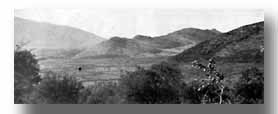 |
Objectives were taken rapidly, the
Germans being flushed out by grenades and bayonets. Mopping-up continued throughout the
night and early morning. At daylight our artillery observers with the infantry on Lungo
spotted highly lucrative targets -- German vehicles and tanks fleeing San Pietro, a German
vehicle park, and troops being rushed uup to make a counterattack -- and called down
massed fires with effect. Lungo was ours. The loss of this feature caused the enemy to
withdraw from battle-scarred San Pietro.
|



